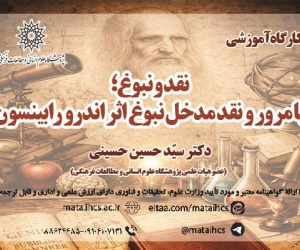آیکونوگرافی پیکره ی سفالین سلطان طغرل سلجوقی (مقاله علمی وزارت علوم)
درجه علمی: نشریه علمی (وزارت علوم)
آرشیو
چکیده
هنر پیکره تراشی و خاصه پیکره های انسانی که در دوران پس از اسلام مورد احتیاط قرار گرفته بود-اگر نگوییم دچار حرمان شده بود- در دوران سلجوقیان مورد توجه واقع شده و پیکره های انسانی با موضوعات مختلف ساخته شدند. از جمله این پیکره ها که احتمالاً ساخته ی کاشان است، پیکره مردی ست که به حالت دوزانو روی زمین نشسته و کلاهی بر سر دارد که نام سلطان طغرل و تاریخ 538 ه . ق. بر روی آن مرقوم شده است. در صورتی که در سال مذکور هیچکدام از سه سلطان طغرل سلجوقی حکومت نمی کردند. از طرفی پیکره مورد بحث از سوی برخی کارشناسان به عنوان مهره شطرنج به مخاطبان معرفی شده است. هدف این مقاله تبیین کارکرد و دلیل شکل گیری پیکره مذکور و در پی آن اشتباه زدایی از اثری ایرانی است که دگرگونه به جهانیان معرفی شده است. سؤال اصلی مقاله چیستی مفهوم پیکره بوده و سعی بر آن است تا با استفاده از روش آیکونوگرافی و توجه به متون مکتوب و یافتن معنای ثانویه تصاویر، به سؤال مقاله پاسخ داده شود. نتیجه مقاله نشان می دهد که نشانگان موجود در پیکره هیچ گونه ارتباطی با شطرنج نداشته و به احتمال قریب به یقین یادمان مظالم نشینی و یا حضور سلطان در مراسم سماع است.Iconography of Sultan Toghrul Pottery Statue
Art has very changes during the Seljuqs period and features that are distinguished from before and after and can be described as the unique attribute. A large part of these developments can be attributed to the cultural and artistic background of the Turks and the other part as a result of the culture of the Muslim Turks. The scope of these changes is so high that the art of sculpture and especially the human faces statue that had previously been (if we have not been, interfered with it) were out of circle, were once again addressed by artists and their supporters, and significant figures on subjects such as men Horse riding, men sitting in different modes, musicians, mother and child who were mostly created in Kashan. One of the pottery sculptures that is very likely to be built in Kashan, which is held in the Khalili collection in London, represents a man kneeling down on the ground and wearing a hat on the edge of that date of 538 A.H. And the name of Sultan Tugrul, which has led to the formation of this figure as the image of Sultan Tugrul Seljuk. Under the rule of the Seljuqs in Iran and ruled three sultan Tugrul that between the first and third rulers, were about 150 years old. The point is that the history mentioned on the edge of the hat is not the same as the rule of the government of any of the kings who called Tugrul, and on the other hand, the technique of making figurines from the perspective of some experts in the early seventeenth century, the time of the end of the Seljuqs rule, and the presence of Khwarizmshahians in Iran. On the other hand, the figure is discussed by the experts as a chess pieces to the audience, but with carefulness in the manner of sitting the figure and with a Comparison with historical figures that were used in other geographies than Iran as chess pieces, and Also with studying historical texts and adapting behavior and covering the royal with the present figure, seems this claim is doubtful and far from reality. The purpose of this article is to explain the function and the reason for the formation of this sculpture and consequently revision the mistake about this Iranian sculpture that has been introduced to the other world. This paper, which is a qualitative research of a fundamental type, aims to use the historic approach, using the approach- method of iconography and the basis of the Erwin Panofsky's views as the theoretical framework, using the historical sources coinciding with the subject and the analytical texts after It will achieve the answer to the question. Essentially, the method of data collection in this research is library method and It has always been trying to use the first-hand texts. The result of the research shows that the signs in the sculpture have nothing to do with chess pieces and are likely to be reflective of the “Mazalem”.









